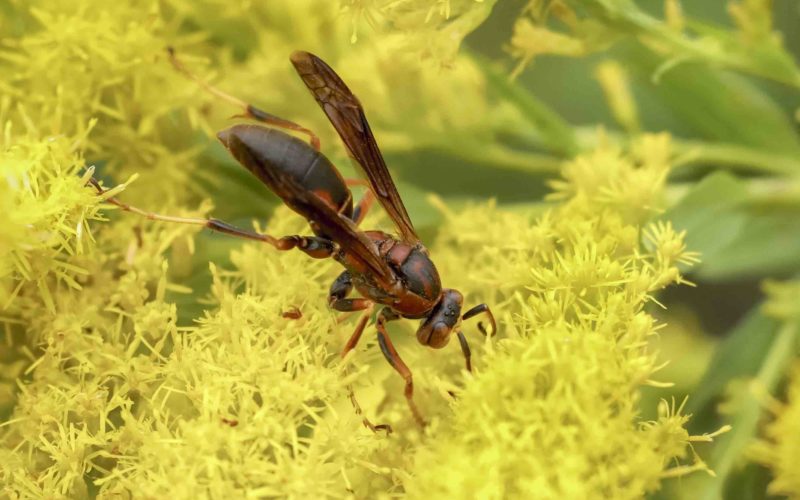Tips keep flying visitors away from humans
AMANDA BANCROFT
Making Ripples
It’s that time of year again when wispy wasps buzz around patios, porches, gardens, sheds or anywhere else they’re unwanted. It seems like they carry pocket meters that tell them exactly where to construct a nest in the most inconvenient spot for humans! In reality, they’re just going about their business as engineers, pollinators, predators and parasites.
A wasp’s role in the ecosystem varies depending on the species. Some hunt spiders, pollinate figs or get eaten by birds. But their role in everyday human life is less diverse: They sting! Actually, not all wasps can sting, but it’s good to discourage nesting in an area where they will not be disturbed or disturb us. It can also be difficult to identify species unless you’re experienced; it may not be obvious if a wasp can sting you or not. So what can you do to prevent wasps from nesting too close?
Bar soap rubbed on a surface like wood or inside a mailbox can cause wasps to look elsewhere. Pretty much any brand of soap will do — like Ivory — but they do make special soaps designed to repel insects or to make people less attractive to biting bugs. You can wash with this soap, or apply it to any surface where you don’t want wasps. This is a great seasonal preventative, and something you can do in advance of their emergence in spring.
A better method that repels active wasps is mint. Plant mint wherever you don’t want wasps to hang out. There are various kinds of mint and spearmint plants. Place cotton balls dipped in peppermint oil in the spot where they’re trying to nest. Or make a spray with a couple of tablespoons of peppermint oil and a squirt of dish liquid added to a bottle of water. The quantities don’t matter as much as the potent smell, and the smellier the better! You can also add citrus, rosemary, clove, lemongrass or geranium essential oils to the spray bottle for an extra kick. Reapply every two weeks, after heavy rain, or when you notice the smell is gone.
Don’t forget to make spaces unwelcoming and unattractive to wasps. Compost piles, especially with fruit in them, entice wasp activity, so keep piles away from areas where you need to work outside. When picnicking, cover plates of food and put away dirty dishes as soon as possible to avoid having wasps land on them. Spit watermelon seeds into a container instead of everywhere around you. Insect repellent may deter mosquitoes, but for some species of wasp, it may actually make you smell attractive! If you find yourself a wasp magnet, check the spray you use.
Traps can be iffy, so use them with caution or just avoid killing wasps if possible. Trapped or dead wasps can release alarm pheromones, and because some wasps are social creatures, these pheromones attract other wasps who arrive to attack the threat — you! Another tip that may help in wasp encounters: they’re attracted to lights. They may fly into your house or porch if there are bright lights, or zoom toward a flashlight beam. There doesn’t seem to be a 100 percent safe way to remove an active wasp nest, so err on the side of prevention. If you must remove a nest, do it on a cold night or early in the morning when wasps may be too cold to fly or move much. Then apply a deterrent like peppermint oil to the former nest site.
Amanda Bancroft is a writer, artist, and naturalist living in an off-grid tiny house on Kessler Mountain. She and her husband Ryan blog about their adventures and offer tips to those wanting to make a difference at www.RipplesBlog.org.










